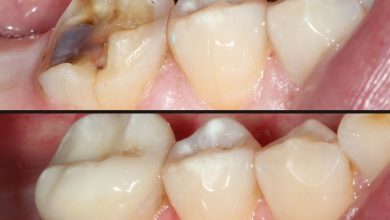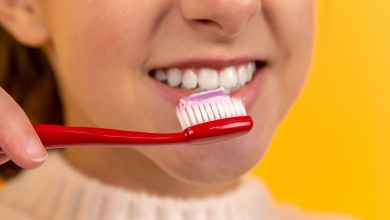Are Cavities Tooth Decay? : The Truth About Dental Cavities

Yes, cavities are a form of tooth decay caused by the accumulation of plaque and bacteria on the teeth. Tooth decay can cause significant damage to the structure and health of the teeth, leading to pain, infection, and potential tooth loss if left untreated.
Maintaining good oral hygiene practices such as regular brushing, flossing, and dental check-ups can help prevent cavities and preserve the overall health of the teeth and gums. Understanding the causes and consequences of cavities is crucial in promoting good oral health and preventing dental problems.
We will explore the relationship between cavities and tooth decay, and discuss effective strategies for cavity prevention and treatment.
:max_bytes(150000):strip_icc()/190731-truth-about-cavities-cceeb4a59a5f4ed291bf8019b2e6a936.jpg)
Credit: www.parents.com
The Cause Of Cavities: Understanding Tooth Decay
Understanding the cause of cavities is crucial for maintaining good oral health. Cavities, in essence, are a form of tooth decay. Tooth decay occurs when the enamel, which is the hard outer layer of the tooth, gets damaged due to bacterial activity.
Several factors contribute to tooth decay:
| Poor oral hygiene | Bacteria thrive in the mouth, especially in plaque and tartar buildup, leading to enamel erosion. |
| Sugary diet | Consuming excessive sugar creates an ideal environment for bacteria growth and acid production, accelerating tooth decay. |
| Acidic food and drinks | Highly acidic foods and beverages can erode enamel, making teeth more susceptible to decay. |
It’s essential to prioritize oral hygiene habits such as regular brushing, flossing, and dental check-ups to prevent cavities. Limiting sugar intake and avoiding highly acidic food and drinks can also significantly reduce the risk of tooth decay. By understanding these factors and practicing good oral hygiene, you can maintain a healthy smile and prevent cavities.
Busting The Myth: Cavities Vs Tooth Decay
Clarifying The Confusion
Have you ever wondered if cavities and tooth decay are one and the same? Let’s clear up the confusion once and for all.
Tooth decay is a gradual process that occurs when the enamel on your teeth is damaged by acids produced by oral bacteria. This can happen due to poor oral hygiene, a high sugar diet, or genetic factors. As the enamel breaks down, it leaves your teeth vulnerable to cavities.
Cavities, on the other hand, are the actual holes or damaged areas in your teeth caused by tooth decay. They can vary in size and severity, and if left untreated, can lead to more serious dental issues.
Now that we’ve differentiated cavities and tooth decay, let’s address some common misconceptions. One misconception is that only children get cavities, but in reality, people of all ages can develop them.
Another misconception is that cavities only occur in visible teeth, but they can also form in the gaps between teeth or in hard-to-reach areas. Regular dental check-ups are crucial to detect and treat cavities early on.
| Clarifying the confusion | |
|---|---|
| Tooth Decay | A gradual process caused by damaged enamel |
| Cavities | Holes or damaged areas in the teeth due to tooth decay |
| Misconception 1: | Only children get cavities |
| Misconception 2: | Cavities only occur in visible teeth |
To summarize, cavities are the result of tooth decay. Understanding the difference between the two can help you take better care of your oral health. Remember to brush and floss regularly, limit your intake of sugary foods and drinks, and schedule regular dental check-ups to prevent cavities and maintain a healthy smile.
The Process Of Tooth Decay
The process of tooth decay is a step-by-step breakdown that starts with initial damage to the tooth enamel. This damage can occur due to poor oral hygiene, sugary and acidic foods, or bacteria in the mouth. When the enamel is weakened, it becomes vulnerable to an acid attack.
This acid attack is often caused by the bacteria in plaque, which feed on sugars from food and produce acids as a byproduct. The acid slowly erodes the enamel, creating a cavity. Over time, if left untreated, the cavity can grow larger and penetrate deeper into the tooth, affecting the dentin and eventually the pulp.
Once a cavity forms, it is essential to get it treated by a dentist. The process typically involves removing the decayed portion of the tooth and repairing it with a filling, crown, or other dental restorations. Regular dental check-ups and maintaining good oral hygiene are crucial for preventing tooth decay and cavities.
Preventing Tooth Decay: Effective Dental Care
Effective dental care is crucial for preventing tooth decay and cavities. Brushing your teeth regularly and using the correct techniques can help keep your teeth healthy. Make sure to brush at least twice a day with fluoride toothpaste and use gentle, circular motions to clean all surfaces of your teeth. Flossing is just as important as brushing, as it helps remove plaque and food particles from areas that your toothbrush may not reach. Mouthwash can also be beneficial, as it can rinse away bacteria and freshen your breath. Additionally, regular dental check-ups are essential for early detection and prevention of tooth decay. Your dentist can identify any potential issues and provide professional cleanings to remove plaque and tartar buildup.
| Brushing techniques for cavity prevention |
|---|
| – Brush at least twice a day – Use fluoride toothpaste – Brush all surfaces of your teeth – Use gentle, circular motions |
The importance of flossing and mouthwash
Flossing and using mouthwash are crucial components of an effective dental care routine. Flossing helps remove plaque and food debris from between your teeth, where toothbrush bristles can’t reach. It’s recommended to floss at least once a day. Mouthwash, on the other hand, can rinse away bacteria, freshen your breath, and provide additional protection against cavities. Be sure to choose a mouthwash that contains fluoride for maximum benefits.
Regular dental check-ups
Scheduling regular dental check-ups with your dentist plays a significant role in preventing tooth decay. These check-ups allow your dentist to examine your teeth and gums thoroughly, detect any early signs of decay or other oral health issues, and provide professional cleanings to remove plaque and tartar. By following these preventative measures, you can maintain optimal oral health and keep cavities at bay.
Diagnosing Cavities: Signs And Symptoms
When it comes to diagnosing cavities, it is important to pay attention to the signs and symptoms. Tooth decay, commonly known as cavities, can be easily identified if you know what to look for. One of the early indicators of tooth decay is sensitivity to hot and cold. If you experience discomfort or pain when consuming hot or cold food or drinks, it may be a sign of tooth decay.
Another sign to watch out for is visible holes or stains on your teeth. Cavities can cause the enamel to erode, leading to the formation of small holes or pits on the surface of the tooth. These holes may be accompanied by brown, black, or white stains.
If you notice any of these signs, it is crucial to visit a dentist as soon as possible. They will perform a thorough examination and recommend the appropriate treatment to prevent further decay and preserve your oral health.
Cavities And Oral Health: Impact On Teeth And Gums
Cavities, also known as dental caries, are a common dental problem that can significantly impact oral health. These decayed areas in our teeth occur due to plaque buildup and the acid produced by bacteria in the mouth. Cavities are indeed a form of tooth decay and can have serious consequences if left untreated.
One of the primary ways cavities affect oral health is by weakening and damaging the tooth structure. As the decay progresses, it can penetrate deeper into the tooth, leading to pain, sensitivity, and even tooth loss if left unaddressed. Additionally, cavities can also have a negative impact on the gums.
Gum disease is often associated with cavities as the bacteria responsible for tooth decay can also affect the gum tissue. The same oral hygiene practices that help prevent cavities, such as regular brushing and flossing, are crucial for maintaining gum health. If cavities and gum disease go untreated, they can lead to potential complications.
If left untreated, cavities can progress, causing more significant damage to the tooth structure and potentially leading to infections or abscesses. Gum disease can also worsen, causing gum recession, bone loss, and eventual tooth loss. Seeking timely dental treatment is essential to prevent these complications and maintain good oral health.
Treating Cavities: Fillings And Beyond
Are cavities tooth decay? When it comes to dental health, it’s important to understand the relationship between cavities and tooth decay. Cavities, also known as dental caries, are indeed a form of tooth decay. They are caused by a combination of factors including bacteria in the mouth, poor oral hygiene, frequent snacking, and sugary drinks.
Treating cavities typically involves dental fillings, which are the standard treatment. A dentist will remove the decayed part of the tooth and fill the space with a material such as silver amalgam or tooth-colored composite resin. This helps restore the tooth’s structure and prevent further damage.
However, for severe cavities, alternative treatments may be necessary. These can include procedures like root canal therapy or dental crowns. It is important to seek timely intervention to prevent the decay from spreading and causing more extensive damage to the tooth.
| Standard treatment | Alternative treatments for severe cavities | Importance of timely intervention |
|---|---|---|
| Filling the cavity with materials like silver amalgam or composite resin | Procedures like root canal therapy or dental crowns | Prevents decay from spreading and causing more extensive damage |
Are Cavities Preventable? Dental Hygiene Tips
Are cavities tooth decay? Yes, cavities are indeed a form of tooth decay. They occur when bacteria in the mouth produce acids that erode the enamel of the teeth, leading to the formation of holes or cavities. However, cavities can be preventable through proper dental hygiene practices.
Proper brushing and flossing techniques are essential for maintaining good oral health. Brushing at least twice a day for two minutes using a soft-bristled toothbrush and fluoride toothpaste helps remove plaque and bacteria from the teeth.
Flossing daily is equally important as it cleans the areas between the teeth where the brush cannot reach. This helps in preventing the buildup of plaque and reduces the risk of cavities.
Choosing the right toothpaste and mouthwash can also contribute to preventing cavities. Look for toothpaste with fluoride, as it helps strengthen the enamel and protect against tooth decay. Mouthwashes containing fluoride can also be beneficial in reducing bacteria and promoting oral health.
Additionally, maintaining a healthy diet is crucial in preventing cavities. Limiting the consumption of sugary and acidic foods and beverages can minimize the risk of tooth decay. Opt for nutritious foods, such as fruits, vegetables, and dairy products, which contribute to overall dental health.
In conclusion, by practicing proper dental hygiene, using the right oral care products, and adopting a healthy diet, it is possible to prevent cavities and maintain a healthy smile.
Frequently Asked Questions Of Are Cavities Tooth Decay?
Is A Cavity Considered Tooth Decay?
Yes, a cavity is considered tooth decay. (8 words)
Is Early Tooth Decay The Same As A Cavity?
Early tooth decay and cavities are not the same thing. Early tooth decay refers to the initial stage of tooth decay, where the enamel begins to weaken. A cavity, on the other hand, is a hole that forms in the tooth due to prolonged decay.
How Long Can Cavities Go Untreated?
Cavities should not be left untreated. Seeking dental care promptly is crucial to prevent complications. Without treatment, cavities can worsen, leading to tooth decay, infections, and even tooth loss. Don’t delay; visit your dentist as soon as possible to address any cavities.
What Happens If A Cavity Is Left Untreated?
If a cavity is left untreated, it can progress and cause further damage to the tooth. This can lead to tooth sensitivity, pain, and difficulty in chewing. Additionally, untreated cavities can lead to infection, tooth loss, and even affect overall oral health.
Conclusion
To sum it up, cavities are indeed a form of tooth decay. They occur when bacteria produce acids that erode the tooth’s enamel, leading to small holes. However, this process can be prevented through proper oral hygiene, including regular brushing, flossing, and dental check-ups.
By taking care of our teeth and understanding the causes of cavities, we can maintain our dental health for years to come.





